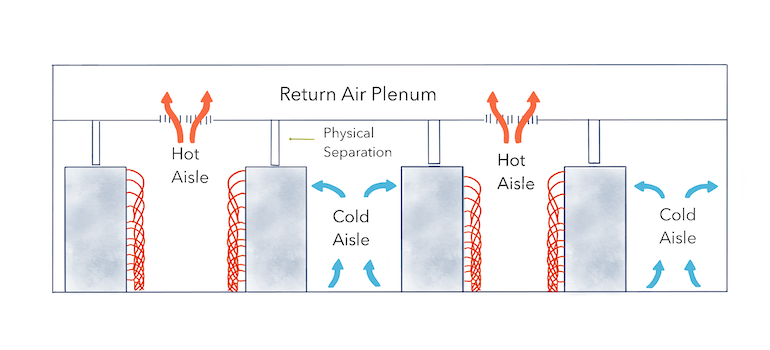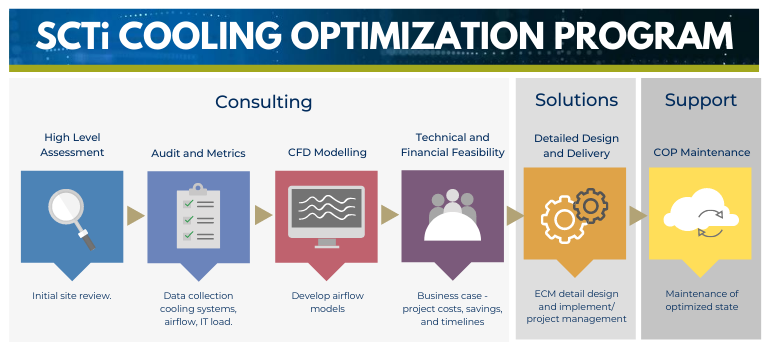Companies, large and small, are relying on IT more than ever right now. Technology is a lifeline, and ensuring that systems and data services remain operational, if not optimal, is paramount. I found it interesting, therefore, to learn more about the inroads being made to reduce electricity consumption used to cool data centers.

Arnold Murphy, CEO, Strategic Clean Technology Inc. (SCTi),
Arnold Murphy, CEO, Strategic Clean Technology Inc. (SCTi), shared his insight on data centre cooling efficiencies, and the imperative for data centers to better manage electricity consumption in order to be more sustainable. To put things into perspective, data centers consume 1% of the world’s electricity every year, and cooling systems account for upwards of 40% of that energy consumed.
“Most people think the IT equipment accounts for the vast majority of electricity use,” stated Arnold. “However, in many data centers, especially those 8 years and older, cooling systems can use as much and, in some cases, more electricity than the IT equipment.“
Added Arnold, “People do not realize how much money is being wasted on excess cooling. In most companies the electricity bill is just paid each month – “it’s a cost of doing business”. No one breaks down the energy cost to see how much is being used by the data center and, certainly no one considers what portion is made up of cooling.”
How Does Data Center Cooling Work?

Figure 1 – layout of a data center showing air flow from cooling system to IT equipment
Arnold explained: “In a data center, cooling of the electronic components is achieved by providing cool air from the cooling systems, delivering the air to the equipment, which then passes through the IT equipment. It is important to ensure the air being delivered to the IT equipment is at the proper temperature and humidity to provide adequate cooling. The amount of electricity consumed by the IT equipment determines the quantity and temperature of the air being expelled. The hot air from the IT equipment makes its way back to the cooling system to be cooled, and it is then sent back to the IT equipment, effectively a closed-loop system within the data center.
SCTi supports companies looking to assess its data centre cooling issues and costs.
“We developed the Cooling Optimization Program, or COP, to enable corporate sustainability in a way that can be replicated in any data center,” shared Arnold. “Our objective is to determine the root cause of cooling issues and deploy the necessary measures to resolve those issues and position the data center for added growth, cost efficiently.”
What follows, Arnold explained, is a customized plan “based on a variety of energy conservation measures (ECM’s) that have proven to be successful in improving data center cooling and reducing energy costs.”
Arnold also revealed, “The most common cooling issues in legacy data centers are related to poor airflow management, which, in turn, causes operators to use too much cooling and keep air temperatures too low. Both of these conditions result in the cooling systems being a significant consumer of excess electricity.”
How can Canadian companies make these facilities more sustainable?
“By prioritizing cooling in legacy data centers,” said Arnold. “There is a large opportunity to improve energy efficiency in these sites and for companies to save tens of thousands of dollars each year.”
“Earlier projections of data center energy consumption showed growth doubling, or even quadrupling over the next few years as the world relies more and more on data-intensive technologies,” suggested Arnold. “These technologies, such as artificial intelligence, smart energy systems, IoT, distributed manufacturing systems, and autonomous vehicles, promise to increase energy demands further and drive the demand for data-intensive computing.”
“IT-related companies have made great progress in improving energy use for IT equipment. Now is the time for Canadian companies to step up by leading the way in reducing the environmental impact of cooling in the many legacy data centers.”

To access the SCTi white paper that outlines the science behind airflow management best practices in data centers with the aim to reduce cooling energy consumption, visit here.



